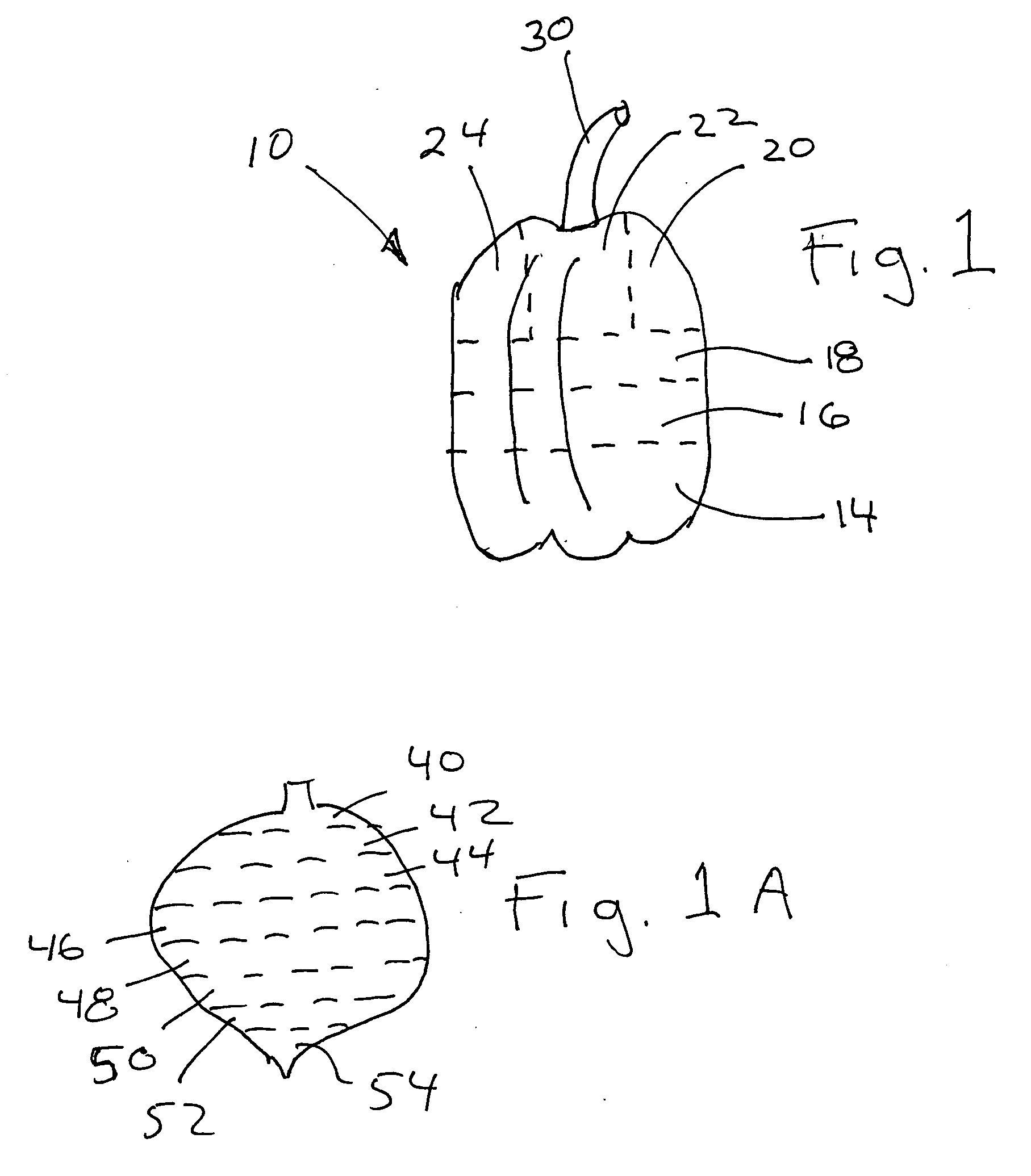Method for dehydrating peppers or other products and puffing for food
a technology of peppers and other products, applied in the field of dehydrating peppers or other products, can solve problems such as damage to vegetables, and achieve the effects of improving the process of making peppers, being convenient for commercial quantities, and being more efficien
- Summary
- Abstract
- Description
- Claims
- Application Information
AI Technical Summary
Benefits of technology
Problems solved by technology
Method used
Image
Examples
Embodiment Construction
[0027] This invention will be described by way of example in connection with peppers / beets and particularly sweet red bell peppers. Of course, as noted in the prior provisional and herein other foods, fruits, vegetables and thick skinned edibles could be used.
[0028] Sweet red bell peppers 10 are first triple washed and cut into three various shapes as per FIG. 1. The first cut is sliced from the bottom and becomes the end piece 14. Next cut yields 2-3 ring shapes 16, 18. The remaining pepper is placed on its' stem top and sliced downward into 4-5 flatter pieces called scoopers 20, 22, 24 for their ability to scoop up dip effectively. One average sized red bell pepper yields approximately 8 pieces. The remaining seeds and stem 30 are discarded 100 lbs of fresh red bell peppers yield 80 lbs of cut pieces. 100 lbs. of fresh produces 80 lbs. of sliced pieces that get 7 lbs. of final dried or dehydrated. This process can be duplicated with all red, green and yellow peppers, or any combi...
PUM
 Login to View More
Login to View More Abstract
Description
Claims
Application Information
 Login to View More
Login to View More - R&D
- Intellectual Property
- Life Sciences
- Materials
- Tech Scout
- Unparalleled Data Quality
- Higher Quality Content
- 60% Fewer Hallucinations
Browse by: Latest US Patents, China's latest patents, Technical Efficacy Thesaurus, Application Domain, Technology Topic, Popular Technical Reports.
© 2025 PatSnap. All rights reserved.Legal|Privacy policy|Modern Slavery Act Transparency Statement|Sitemap|About US| Contact US: help@patsnap.com



